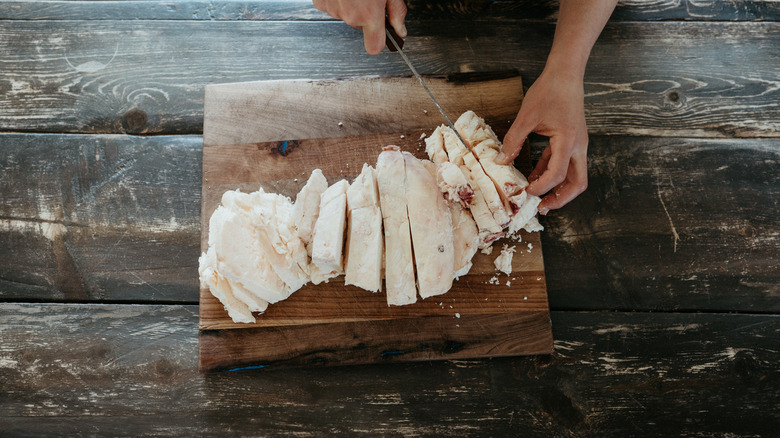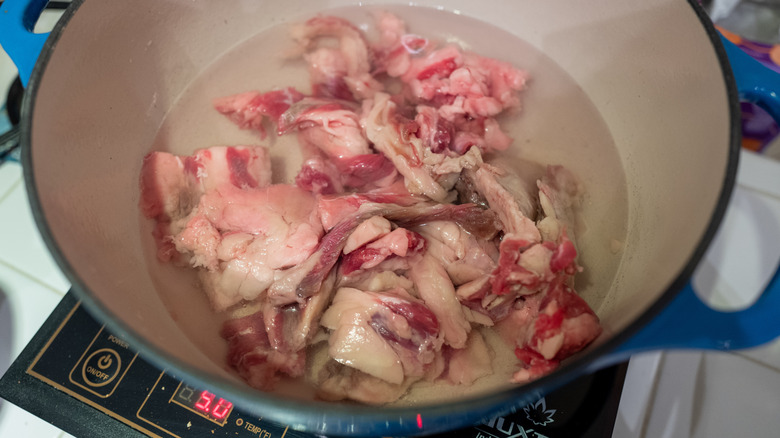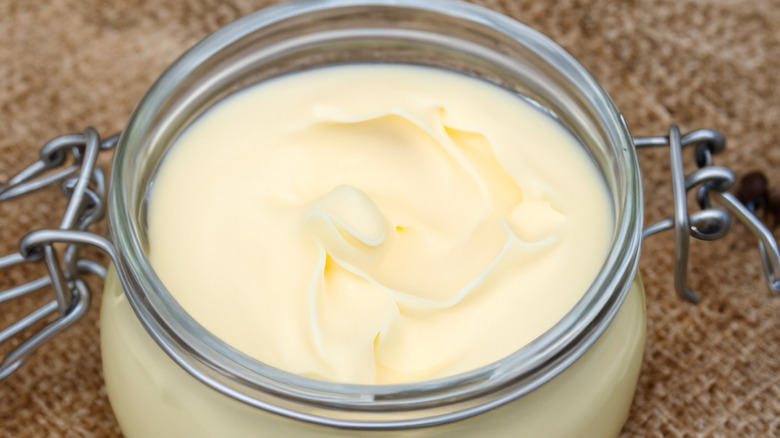What Sets Beef Tallow Apart From Beef Fat?
Fat is one of the most important elements of cooking, but there are multiple types to choose from. It can come from sources such as olive oil, vegetable oil, or butter, which are common bases for frying. Beef fat and beef tallow, on the other hand, are popular animal-based fats that are also used in cooking, but what's the difference between the two?
The most important thing you should know is that these two substances come from the same place: the fat around the organs of a cow. Beef fat is the raw material used to make tallow, and tallow is the result of rendering that beef fat down to a more usable form. The way the cow is raised will impact the quality of both the fat and the resulting tallow, and the health impacts of consuming these ingredients depend on the same factors. Many restaurant chains cook with beef tallow, such as Outback Steakhouse and certain Popeyes locations, but others avoid it because it prevents vegetarians and vegans from eating even their non-meat options.
What is beef fat?
Beef fat is generally sourced from the hardened fat around the organs of ruminant animals, namely cows. The material is often referred to as suet, but this term specifically denotes the fat located around the cow's kidneys and loin. General beef fat can be obtained from around other organs, but the high-quality stuff will mainly come from suet.
Home cooks should note that on its own, raw beef fat isn't nearly as useful as tallow. It can be used in certain foods — such as sausages — to enhance the flavor, but rendering it down through melting requires much more effort. Adding extra fat to ground beef can be a great way to modify the ratio of fat to lean meat yourself, just in case the store didn't have what you were looking for. However, most uses for this ingredient involve rendering it into tallow for a plethora of other uses.
What is beef tallow?
Beef tallow is a rendered product of beef fat, making it incredibly useful in the kitchen. To render your own tallow, simply heat beef fat slowly until it melts into a liquid. Then, separate the liquid from any other meat remnants. Once cool, the tallow will harden into a soft, moldable substance. Tallow is often used as a cooking oil for various applications, from pan frying to deep frying. It also offers certain health benefits — like lowering inflammation and improving heart health — due to its unique fat profile.
Not all tallow is the same, however. There are arguments for using grass-fed beef tallow over grain-fed due the former's higher levels of conjugated linoleic acid and omega-3 fatty acids. There are also pros and cons of frying with beef tallow, as it brings loads of flavor to cooking but is also relatively expensive compared to vegetable or seed oils. Not only can you use quality tallow for cooking, but it can even be a useful skincare product due to its similarity to the oils found in human skin. Alternatively, tallow can also serve as a base for candles and certain types of soap.


